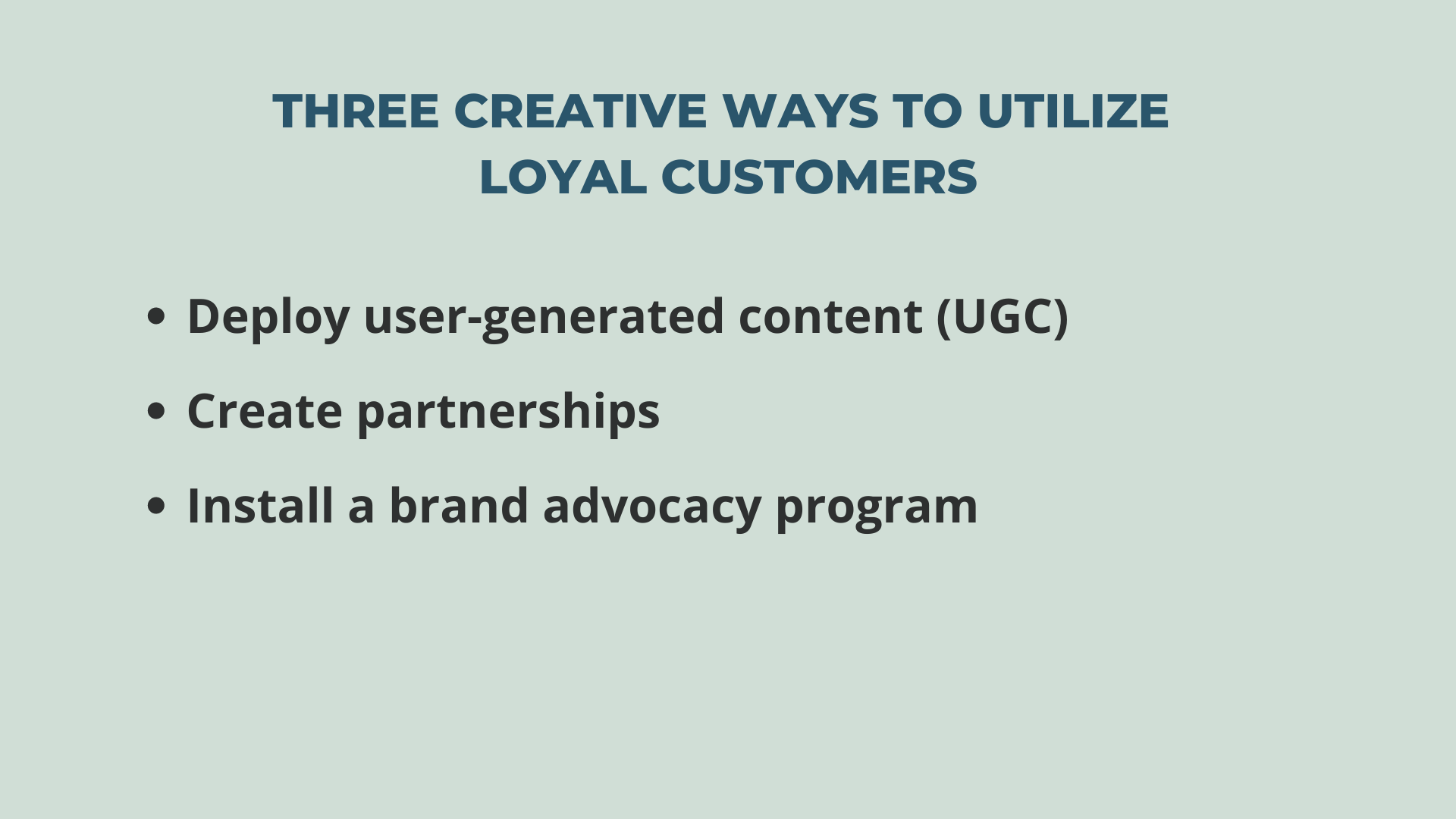4 Unique Ways Social Media Listening Can Increase Customer Advocacy

4 Unique Ways Social Media Listening Can Increase Customer Advocacy
Today, social media heavily influences consumers’ buying decisions and brand awareness. Three out of four consumers say they’ve discovered a new local offering based on recommendations and posts on social media. With such a competitive landscape, what are you doing to stick out from the crowd? One way you can differentiate your business is through social media listening, which can increase customer advocacy, brand awareness, and sales.
In this blog, we’ll explain what social media listening is, how it improves customer advocacy, and how to enhance both simultaneously.
What is Social Media Listening?
To understand what social media listening is, we first need to define social listening. Social listening is the recurring act of proactively analyzing online conversations and trends around your business, competitors, and industry.
Social media listening is the same as social listening but takes place on social media platforms. Think of social media listening as a critical segment of social listening.
Social media is where you need to have an ear to the ground because so many people engage with your brand or have conversations about your competitors on social media platforms.
Now that you understand what social media listening is, let’s define customer advocacy and how the two work together.
What is Customer Advocacy?
Customer advocacy is a business model that puts customers’ interests at the forefront of your business. It’s the act of constructing and nurturing relationships with repeat customers.
These loyal customers often become “customer or brand advocates” who speak positively about your brand and recommend your business to friends and colleagues.
A customer advocacy program continuously thinks about the customer experience (CX) and how to improve your marketing, sales, and customer service.
Read our customer advocacy KPIs article for more detailed information on how to construct a customer advocacy program and measure its effectiveness.
How Social Listening and Customer Advocacy Coincide
Social media listening enables your organization to identify and analyze positive, neutral, and negative conversations about your brand, competitors, and industry. It’s an essential part of the CX.
This feedback from social media listening helps your business address customers’ questions and pain points. This, in turn, improves your customer service, which enables you to gain more loyal customers and brand advocates.
4 Ways to Improve Customer Advocacy Through Social Media Listening
1. Monitor Social Media
Social media monitoring is a more reactive version of social media listening. By monitoring social media you can track, recognize, and respond to individual brand mentions or engagements across all social media accounts — corporate and local social profiles.
Seventy-six percent of consumers expect companies to respond to their social media comments. Of those consumers, 83 percent expect a response within 24 hours.
Your business needs to meet these expectations, or consumers may become frustrated and begin to consider your competitors. You need to monitor and respond to comments and feedback as soon as possible on all social accounts to address consumers’ questions and concerns.
Monitoring and responding to social posts, whether positive or negative, shows that you’re listening and your customers are being heard. Moreover, customers will feel satisfied, making them likely to advocate for your brand. Having a social media management and a social listening tool will help you achieve this task — more on that later!
If you need help crafting responses to negative comments or reviews on social media, download our Multi-Location Marketers Guide to Online Reputation Management.
2. Gain Competitor and Industry Insight
Social media listening can also help you acquire critical information and insight into competitors and industry trends. A robust social media listening tool will allow you to listen to conversations about your industry and your competitors.
For instance, you might see conversations about repeated customer service issues with one of your competitors. You can then leverage this intel in your marketing and sales content by highlighting your stellar customer service capabilities and satisfied clients.
Additionally, consumers turn to social media to discuss industry trends and make purchase decisions — particularly younger shoppers.
Eighty-seven percent of Gen Z consumers use social media to find new brands to follow and engage with.
Similar to leveraging competitor insights, you can use social listening to understand common consumer pain points around your industry and get insight into their wants and needs. Again, you can use these social media insights in your marketing and sales materials to better connect with customers and improve your customer advocacy program.
3. Improve Your Products and Services
Similar to better understanding your competitors and industry, social media listening can help refine your products and services. As we noted earlier, customers often turn to social media to give feedback about a business’s products or services.
Often, consumers will directly engage with a company’s social media profiles, or they’ll mention them in a status update or one of their stories.
It’s vital that you not only respond to these engagements promptly but also record and analyze trends. For instance, let’s say you’re a property management company (PMC), and multiple residents at one property are posting on social media about work order delays.
You must address these concerns and quickly find solutions to these work order requests. Not being aware of these trends could upset current residents, who are already or could become advocates for your PMC. Furthermore, these social media posts or comments could turn away potential residents.
Understanding what consumers are saying about your products and services on social media, and making improvements accordingly is essential.
4. Boost Brand Awareness With User-Generated Content, Partnerships, and Brand Advocates
Another social media listening tactic is to find and leverage customers who already adore your business and brand. These are satisfied customers who already post positively about your brand on social media. Next, we’ll look at how your brand can utilize these loyal customers.

User-Generated Content:
User-generated content (UGC) is content consumers create in the form of reviews, videos, images, etc., and is published on an online search or social network.
Both social listening and social media listening will help you identify users’ content that you can reproduce for your marketing materials. For instance, you can post customer’s UGConto your local social media profiles.
Best of all, UGC has a high ROI. A recent survey revealed that 80 percent of consumers say UGC highly impacts purchase decisions — 6.6x more than branded content.
Partnerships:
Another way to boost brand awareness is by creating partnerships with some of your top consumers — especially those with an extensive online and social media presence. These partnerships often fall under influencer marketing and require you to create contracts with these partners to promote your products and services online.
Again, social media listening can help you identify who your top consumers and influencers are. You can also use social media listening to get notifications when your partners mention your brand, helping you better understand the total impact of your partnership.
Brand Advocacy Program:
If you don’t have the budget or time to create partnerships or partake in influencer marketing, consider a brand advocacy program. Similar to partnership marketing, a brand advocacy program should recruit your top customers to promote your brand.
Brand advocates are similar to influencers but they’re highly-satisfied customers who already advocate for your brand. Influencers have a large social media following and promote your brand and others.
You should compensate these brand ambassadors or advocates for advertising or marketing your brand. For instance, if they promote your business or a new product on social media, they can either be compensated by payment, given discounted deals or entered into a rewards program.
Just ensure you stay within each social media platform’s endorsement and partnership guidelines and the FTC’s endorsement guidelines.
Request a demo today to learn how SOCi can improve your social media listening and increase customer advocacy!






